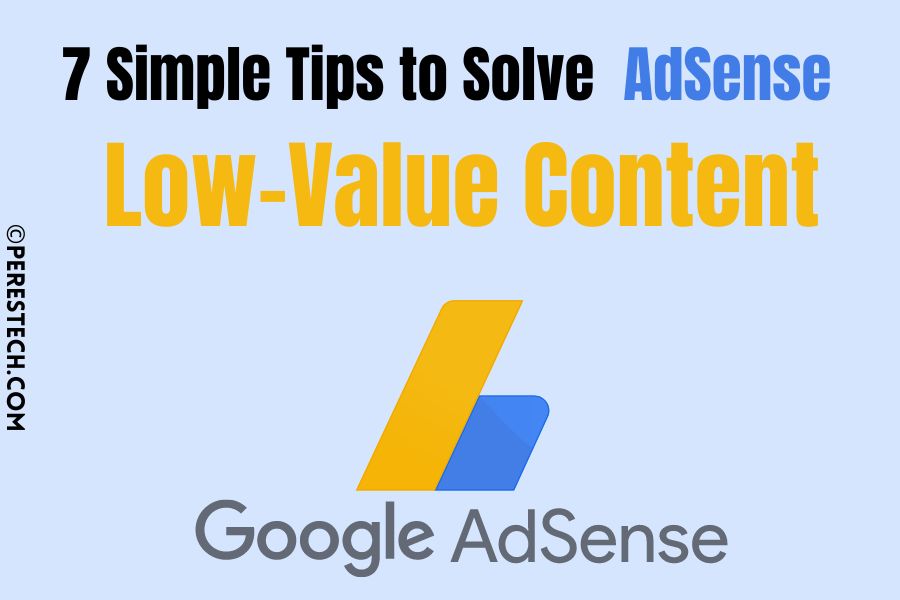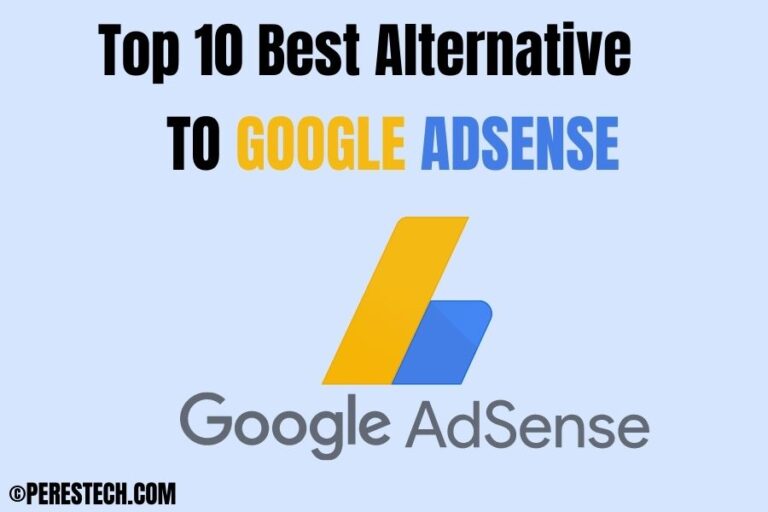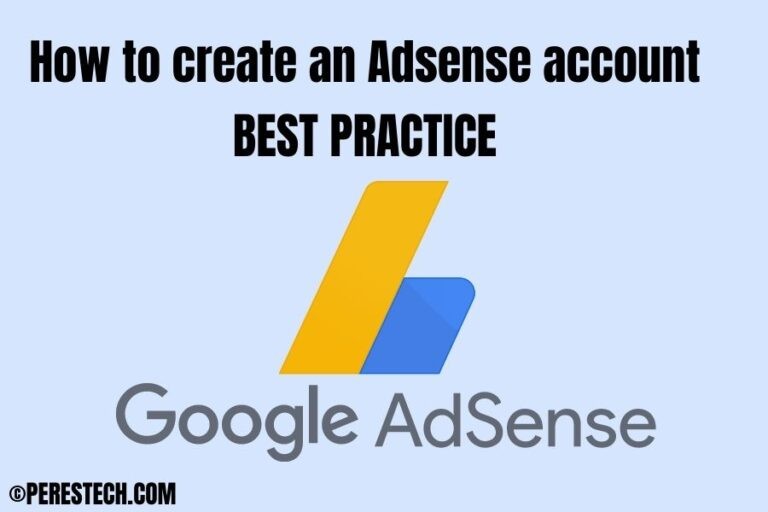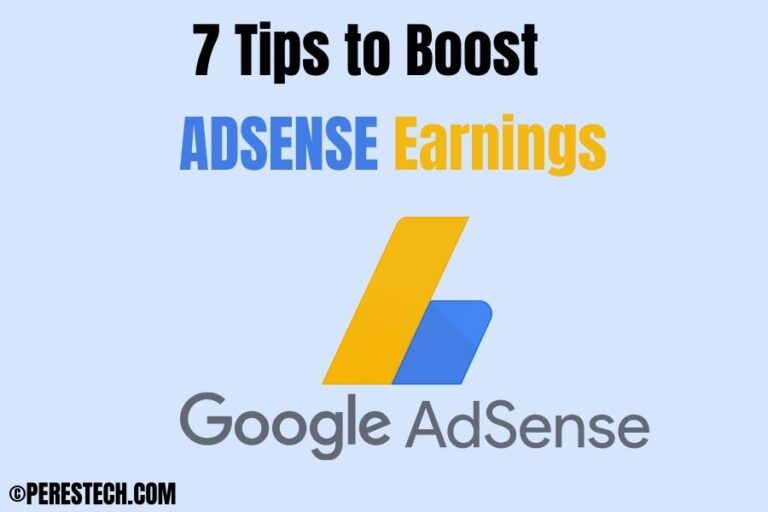7 Best Tips to Fix AdSense Low Value Content Problem
Google AdSense is one of the best pay-per-click programs out there, but if you don’t take some extra steps to improve your content, it can be hard to make money with it. Here are 7 easy ways to fix Google AdSense low value content problems so you can start earning more money from your website traffic. These tips are guaranteed to work because I’m writing from experience and not by research and suggestion.
How Does Google AdSense Determine My Article Is Low-Quality?
Google AdSense evaluates your content quality using a program called Article Quality Rating. This is an automated program that monitors your page views, bounce rate, and time on-site to determine whether your content is high-quality or low-quality.
If you start getting a lot of notifications from Google AdSense that you have a Low-value content error, there’s a chance you’re publishing low-quality content.
Google doesn’t say exactly how it makes these determinations, but if you follow a few best practices, you should be able to avoid issues. First, always check that your content has an SEO-friendly title tag. It should be no more than 55 characters in length and include your primary keyword in it. In addition, make sure your content is long enough. Google recommends that web pages with longer articles have fewer problems with content quality issues.
With all this said, let’s begin
How to Fix Google AdSense Low Value Content Error
Honestly speaking, there isn’t a direct solution to this problem, because the Google AdSense team do not state the exact cause of this problem, but I believe by following the suggestions below, you should be able to solve that problem because I have also faced this issue in the past with other website but applying this 7 tips helped to solve the problem easily.
Write High-Quality & Unique Content
One quick way to get flagged by Google is with content that is low-quality or duplicates another site’s content. To avoid any flags from Google’s AdSense algorithm, you should start with creating high-quality and unique content.
Make sure you’re writing high-quality content that meets and exceeds your audience’s expectations since Google wants its users to have a positive experience. If people are reading your content and loving it, they’ll be more likely to share it with their friends who are also likely to love it, too.
Then those friends will read your content and be inclined to share as well. This makes it possible for Google’s algorithm to pick up on how great of a site you’ve created and then rank you higher in SERPs based on performance over time.
Write Long-Form Content
Write longer pieces with higher word counts. Google’s algorithm might change and make these AdSense low value content guidelines irrelevant in a few years, but at least for now, it is an effective way of solving your problems with low-value content errors.
If you haven’t already implemented a long-form on your site, focus on that first before anything else. It can be helpful when thinking about what kind of long-form topics you should be writing about.
For example, if your niche is travel you could try exploring different types of luxury travel experiences across locations around the world like cruises, safaris and more. The more information people have access to (that they’re interested in), generally speaking; the better Google’s users will be.
Make Sure You Have The TLP’s ( Top Level Pages )
One of the main reasons why Google AdSense will flag you for low-value content is due to the fact that you don’t have the required pages that further help explain your website and also keep your audience data secured when they interact with your website.
Some of these pages are;
- About Us Page – This page helps Google AdSense to know more about your website ( What you plan on offering your audience ) and at the same time also tells your audience who you are, that’s why you should put a little information about yourself on your about page.
- Contact Us Page – As the name states, this page should contain your contact details, such as your active email address, Telephone number ( Optional for personal website ), and social media handles and possibly add a form where users can fill and get in contact with you easily.
- Privacy Policy Page – This page mainly informs your users and Google AdSense about the information you collect from your audience and what you tend to do with that information. This page may be complicated to write, but you don’t have to worry yourself since there are lots of tools that will help you generate this page for free. However, if you are a WordPress user, you can simply make use of the WP Lega Page Generator.
There are other important pages that are not listed here, which are ( Terms and Conditions, DMCA, and CCPA – California Consumer Privacy Act these pages are very important and needed for every website to have.
Make sure Your Contents are Indexed on Google
There is no way the Google AdSense team will approve your website if your website can’t be found on Google or even if it’s found, it shouldn’t just be your home page alone at least 20 of your blog post should be found on Google. In this way, AdSense will better understand your website and it may even fasten up your approval process if more of your blog post can be seen across Google. For your website to be seen on Google, you will need to submit it to the Google webmaster now known as Google Search Console.
In case your site is not yet available on Google, Kindly watch the video below and see how you can put your site on Google and bypass Google AdSense Low value content.
Have at Least 20-30 High-Quality Blog Posts
Most people have the perception that the number of articles on your website doesn’t really affect the approval process, though they are right because even my website got AdSense approval with 14 posts whiles others got Approved with 10 and below.
However, from my experience I will recommend you write 20+ high-quality content with at least 18 indexed and driving some decent amount of traffic before planning on applying for AdSense for this can also fasten up your approval process as well.
Use Media in Your blog Post ( Images and Videos )
Using images or videos doesn’t just help you bypass Google AdSense low value content error but also helps improve the SEO ( Search Engine Optimization ) Score of your website, which could in long run bring in more traffic through image search.
Search engines like blog posts that have images or videos within them, because they believe that, the article is well detailed to solve users’ problems. Though not all post may require you to add an image or video, but is important every post on your website have a featured image.
Related: How to Increase Google Adsense Revenue ( 7 Easy Steps )
Related: Eligibility Requirements for AdSense
Publish Content Regularly
When it comes to blogging, mostly for new blogs, it is advised to publish not less than two(2) blog posts per week for this will notify search engines and AdSense that your website isn’t a dead but active website, this will also help boost your traffic because the more post you have on your website and on your promotional channels will have a great impact on how many traffic you get.
We all are aware of the fact that Google loves fresh content because new problems are discovered every day and old problems also upgrade so when there is a new article which Google think can solve the same problem as the old post used to do, Google will be left with no option than to rank your that new post.
Conclusion
The tips listed above will help you solve the Google Adsense Low value content problem and at the same time, give your website the best presence on search engines as well. One thing you must put in mind is that in any field you find yourself in, consistency is the key to success.
If this article was helpful to you, please don’t forget to share and also drop a comment for us I’ll surely check it out. Kindly Subscribe to my and follow me on Facebook and Twitter in other to get updated on how to grow your blog and start making money.
This post contains affiliate links.




